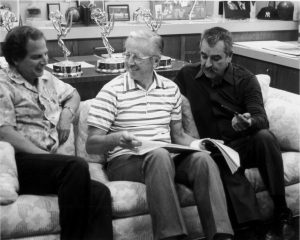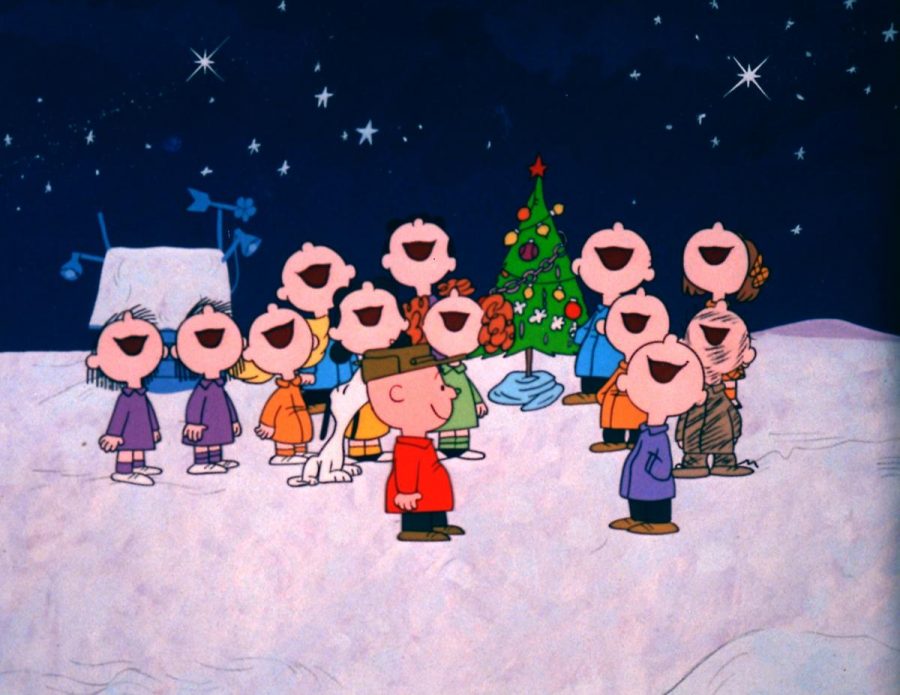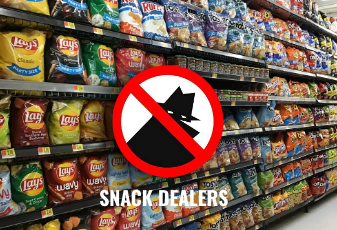Commercialism and the search for meaning in A Charlie Brown Christmas
© 1965 United Features Syndicate
A Charlie Brown Christmas was released on December 9th, 1965, receiving critical acclaim from viewers and critics alike.
In 1963, television producer Lee Mendelson approached Peanuts creator Charles Schulz with the idea of creating a short documentary film based on Schulz and his iconic comic strip. Schulz agreed, and the documentary, A Boy Named Charlie Brown, was finished later that year, although it would remain unaired as Mendelson spent the next year and a half struggling to sell the film to an interested network or sponsor. After months of frustration, Mendelson was contacted in 1965 by John Allen of the New York advertising agency McCann Erickson. Allen, impressed with the documentary, presented Mendelson with the opportunity of creating a half-hour Peanuts Christmas special to be sponsored by the Coca-Cola Company. Mendelson agreed, immediately contacting Schulz and animator Bill Melendez to draft an outline of the special, which would include winter scenes, a passage from the Bible, and a jazz soundtrack; this outline would remain unchanged throughout the entire development process. The production of A Charlie Brown Christmas was completed only ten days before it was set to be aired, and on the night of December 9th, 1965, it was watched on CBS by an estimated 15 million Americans – over 45% of that evening’s total television viewers.

55 years after its release, A Charlie Brown Christmas is considered by many to be one of the finest holiday specials ever created and has become an annual viewing tradition for millions of families across the country. The popularity of Schulz’s comic strip can certainly be attributed to the special’s success, but A Charlie Brown Christmas contains a remarkable depth and inimitable charm that separates it from other holiday specials, giving the film a timeless appeal and relevance that has continued well into the 21st century.
One of the greatest strengths of A Charlie Brown Christmas, and perhaps the main reason why the special is able to incite such powerful nostalgic feelings in the hearts of adults, is its ability to effortlessly capture the magic of childhood. Many measures were taken to give A Charlie Brown Christmas a childlike authenticity and innocence; for instance, the voices of the Peanuts gang, save for Snoopy, were provided by children rather than adults, an uncommon practice at the time. Nearly all of the child actors were untrained, and their poor line deliveries give the special a very wholesome, unrefined aesthetic that more closely resembles an elementary school play than a film created by professional animators. The animation itself embodies this imperfection through its choppy motion and coloring book-quality illustrations, effectively imitating the style of Schulz’s comic strip while retaining its appeal. The soundtrack of A Charlie Brown Christmas, composed by San Francisco pianist Vince Guaraldi, is also instrumental in setting the proper tone for each scene of the special – whether it’s the excitement of “Linus and Lucy”, the hauntingly beautiful “Christmas Time is Here”, or Guaraldi’s signified interpretation of “O Tannenbaum”.
The childish simplicity of A Charlie Brown Christmas compliments rather than masks the surprisingly mature topics it touches upon. The film’s plotline begins as Charlie Brown voices his severe lack of enthusiasm for the holiday season to Linus: “Christmas is coming, but I’m not happy,” he says. “I don’t feel the way I’m supposed to feel.” Seasonal depression is something that many holiday specials, especially ones intended for younger audiences, would not dare to mention in fear of violating society’s ideal of Christmas – a time of unbridled joy, its revelers drunk on a “holiday spirit” that leaves no room for negative feelings of any sort. Charlie Brown’s disillusion with Christmas forms the central conflict of the story as he tries desperately to search for significance and fulfillment in a season he fails to understand.
It’s this struggle that leads Charlie Brown to seek the help of his tormentor/psychiatrist Lucy van Pelt, who suggests that he served as the director of their school’s Christmas play in order to ease his woes and gain a better understanding of the holiday itself. This is where the most prominent theme of the special begins to creep in: the ever-expanding commercialization of the Christmas season. Charlie Brown’s lack of enthusiasm for Christmas is exacerbated by the soulless materialism that surrounds him; his own beagle has entered a decorating contest which defines the “true meaning of Christmas” as a cash prize for the winner, and his little sister writes a letter to Santa Claus requesting “tens and twenties” in lieu of toys. Despite being a television special funded and sponsored by The Coca-Cola Company, A Charlie Brown Christmas is able to deliver a genuine message about the dangers of rampant consumerism while maintaining a tongue-in-cheek sense of humor over its self-contradictory nature (the special’s first airing included a scene during the ice skating segment where Linus crashes into a Coca-Cola advertisement that’s been inexplicably placed in the center of a frozen pond).
The strong anti-commercial sentiments of A Charlie Brown Christmas give the special a very personal and almost metafictional quality. Knowing the trials and tribulations Mendelson went through in order to find a sponsor for his documentary, one can’t help but wonder if Charlie Brown’s anger with the bloated, morally-bankrupt commercialization of Christmas is an outlet for Mendelson’s own frustration with the corporations and faceless businessmen he was forced to contend with. Does A Charlie Brown Christmas contain an even deeper, perhaps unintentional message about the struggle of an artist to survive in a society where profits, ratings, and practicality are treasured over creativity? Any further thoughts on this topic would venture away from analysis and into speculation.
Charlie Brown takes Lucy’s offer and becomes the director of the school play, but when it becomes clear that their play lacks the level of sophistication demanded by Charlie Brown, the children suggest that he and Linus find a Christmas tree in order to establish the holiday theme of their production. Charlie Brown is confronted once again by the dark forces of commercialism at the town’s Christmas tree farm, finding its stock overridden with hollow, neon-tinted aluminum trees rather than traditional firs or pines. Not willing to submit himself to the material world, Charlie Brown chooses the only “real” tree on the farm: a stringy, pathetic little sapling with hardly any leaves left to shield its branches from the cold. His peers are furious with him for choosing such a sad tree, throwing insults and derisively laughing at the hapless Charlie Brown before, in a fit of desperation, he exclaims, “Isn’t there anyone here who knows what Christmas is all about?”
This moment is where the spiritual climax of A Charlie Brown Christmas occurs. Linus, child philosopher of the Peanuts gang, answers Charlie Brown’s question by reciting several verses from the Gospel of Luke which describe the nativity of Christ. Charles Schulz’s decision to include a Bible verse in the special was strongly opposed by CBS executives, as well as several members of the production team, for a multitude of reasons. Some considered the presence of sacred texts in an animated children’s program to be blasphemous, while others thought the scene was out of place and potentially off-putting to a national audience. Schulz stood by his choice to the very end, however, and Linus’s speech was kept in the special’s final cut.
The verses operate on both a religious and secular level. For Christians, Linus’s recitation is a beautiful testament to the significance of Christmas, an important reminder of the holiday’s origins and why it’s celebrated around the world. The scene contains a palpable magic that isn’t lost on viewers of differing religious backgrounds; the image of Linus, enveloped in silver light and speaking through the darkness of the school auditorium, is powerful enough on its own. The speech also ties together the themes of the special, with Charlie Brown’s search for meaning finally coming to a close as he overcomes the empty vanities of commercialism and discovers the true value of Christmas.
His happiness restored, Charlie Brown gently carries his tree home as Linus and the rest of the children follow him from a distance. Much to Charlie Brown’s dismay, his initial attempt to liven up the tree with trinkets from Snoopy’s award-winning decorations causes it to keel over in the snow. The rest of the children arrive as Charlie Brown stomps off in frustration, and they tear the remaining decorations off of Snoopy’s doghouse (a literal metaphor for dismantling the commercialization of Christmas?) and place them on the tree, giving it a much-needed makeover. The special concludes with Charlie Brown reconciling with his peers, gathering with them around the Christmas tree, and joining in a recital of “Hark! The Herald Angels Sing”.
The almost bizarre amount of intelligence and wisdom to be uncovered in A Charlie Brown Christmas allows viewers to find enjoyment in the special well after their childhoods. These profound reflections on the meaning of Christmas, combined with the enduring charm of Schulz’s characters, make A Charlie Brown Christmas an essential holiday classic.

Adam Mercer is a senior at Arroyo Grande High School and a second-year reporter for the Eagle Times. He likes to read, write, listen to music, watch movies,...











